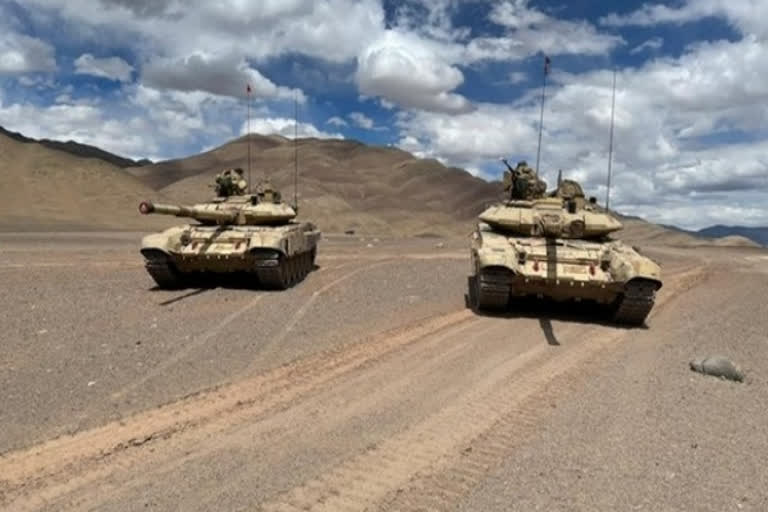Nyoma: More than a year after the Indian Army started deploying its tanks in a massive way in Eastern Ladakh, the armoured regiments have evolved their standard operating procedures to use their machines more effectively at altitudes ranging from 14,000 feet to 17,000 feet in the area.
The Indian Army started bringing the T-90 Bhishma and T-72 Ajay tanks along with the BMP series Infantry Combat Vehicles from the deserts and plains in a big way to these high altitude locations from last year with the beginning of the Operation Snow Leopard to counter the Chinese aggression in eastern Ladakh last summer.
"We have already spent a year in the Eastern Ladakh at these heights experiencing temperatures up to -45 degrees. We have evolved our SOPs to operate the tanks in these temperatures and harsh terrain," an Army official told the media.
Despite the disengagement at few locations like Pangong lake and Gogra heights, both sides continue to maintain troops in large numbers along the Line of Actual Control. The Indian Army has also continued to strengthen its operations in these areas with tanks and ICVs to tackle any threat or challenge at these heights.
Read: India, China disengage in Ladakh's Gorga, all temporary structures dismantled
The media team witnessed the tank manoeuvres carried out by a tank regiment while practising attack operations in high-altitude areas at a location barely 40 kms from the China border. The Indian Army has created a huge infrastructure last year for supporting its tank operations including tank shelters which help in avoiding parking the machines in open during winters.
"The stress is now on maintenance of these tanks as extreme winters can have an impact on the rubber and other parts. If we can maintain these tanks well, we can use them here for very long," they said. The Indian Army had started inducting men and machines in large numbers after the Chinese aggressively moved to locations such as the Finger area and the Galwan valley in eastern Ladakh in May 2020.
The Indian Army's resolute actions in the area deterred the Chinese from behaving aggressively further and the episode saw violent clashes in the Galwan river valley. Bullets were also fired against each other when the Indian troops beat the Chinese in occupying heights in the southern and Northern Pangon Lake area.
ANI



